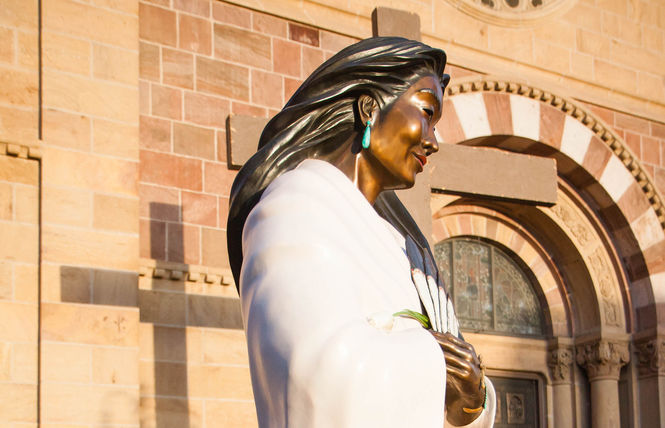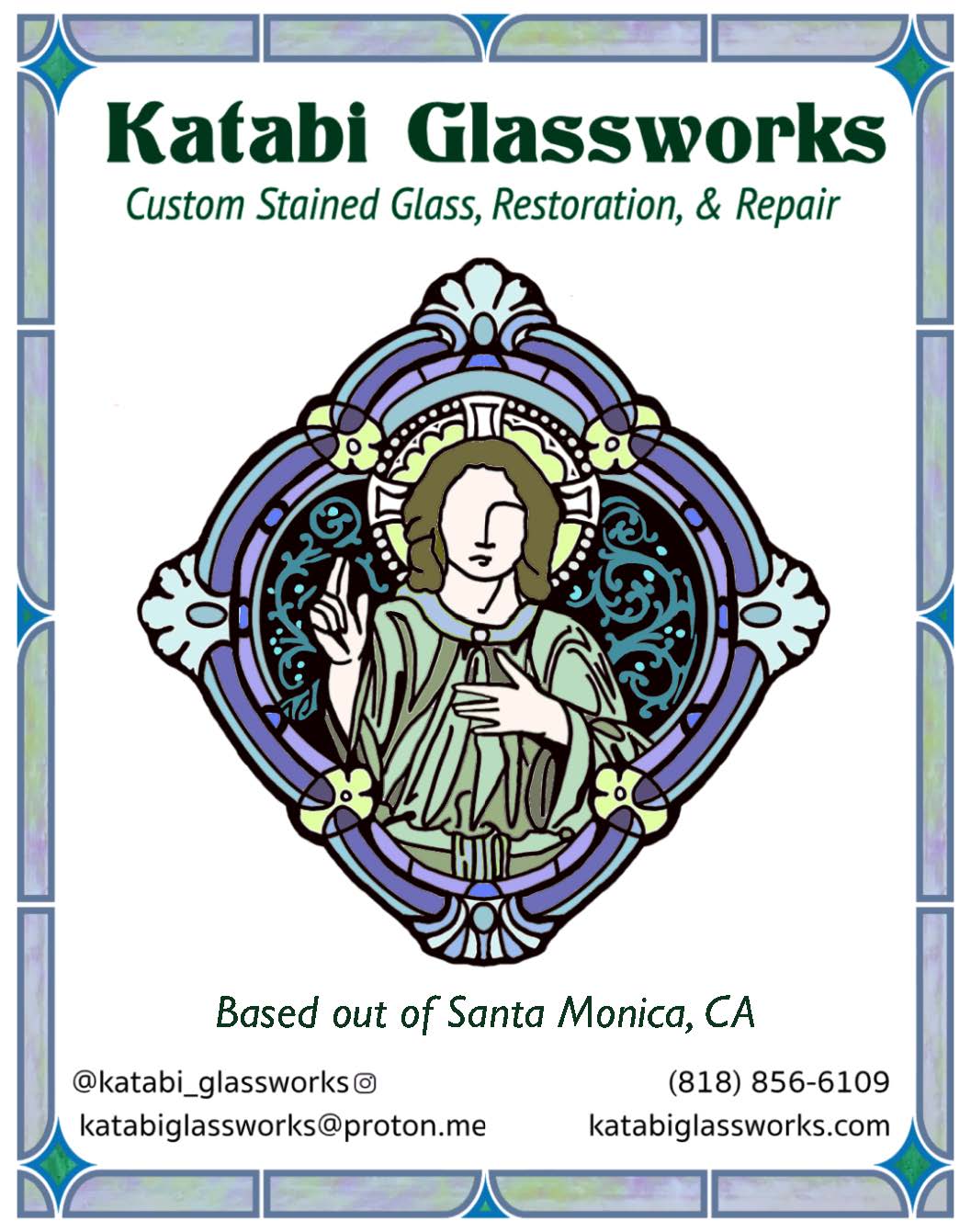Two stories from the first evangelization of North America reveal how mentoring a younger person in knowing and loving Jesus Christ can both help that person become a saint and be that mentor’s path to holiness. The stories of St. Kateri Tekakwitha and her contemporary Martin Skadegonrhaksen, a holy Mohawk youth, reveal that their mentors were not perfect, but as they drew closer to the love of Jesus, they drew their mentors closer too.
Both Martin and St. Kateri came from the same Haudenosaunee [Iroquois] village of Caughnawaga [near present-day Fonda, N.Y.] in the Mohawk nation, one of today’s Six Nations of the Haudenosaunee. Martin and St. Kateri’s paths both led them to live at an intentional Catholic Haudenosaunee community on the St. Lawrence River of Canada, eventually known as Kahnawake. Both Martin and St. Kateri chose to take no spouse on earth, because they wanted to give themselves completely to Jesus. They also died in their early 20s, but they left deep impressions on their contemporaries, especially their mentors, as told in the biography The Original Caughnawaga Indians by Jesuit Father Henri Béchard.
Martin was brought to the Catholic faith by the witness of Joseph Togouiroui, a great Mohawk chief of Kahnawake. Joseph did not have a perfect life. He had initially abandoned his wife and child after her conversion to Christianity. But he returned to his family after a Haudenosaunee Catholic couple showed him how the Catholic faith made their marriage, and lives more beautiful, and he was impressed by the content and beauty of their prayers. He eventually sought and received baptism after reuniting with his wife, and together they evangelized their friends and relatives — one of whom was Martin Skandegonrhaksen.
Martin joined his uncle Joseph at Kahnawake, and for two years until his death in 1675, he was known as a peaceful and joyful evangelizer, who would draw people to Jesus Christ in a variety of ways. He would speak publically about Jesus in his Mohawk home village, and sing the beautiful Haudenosaunee hymns they sang in Kahnawake.
But Martin also lived in private the love of Jesus he shared in public. He nurtured his deep love for God by going to Mass in the morning, and after the day’s work, praying in the chapel, where the Creator — that Mohawk had all been taught by their elders to worship — had come to dwell among them as Jesus in the Holy Eucharist. He went to Confession and received Holy Communion frequently. He had a deep devotion and confidence in the Virgin Mary, and prayed the rosary to help him with the temptations he faced. He also encouraged others to join in praying the Holy Rosary aloud with him.
Martin’s spiritual depth made an impression on Joseph, who would sometimes ask Martin for his insight and counsel on spiritual matters.
During a hunting trip together, however, Martin fell ill, and Joseph tried to bring him home carrying him on his back. Martin kept praying his rosary and encouraged Joseph to live as a good Christian.
Right before his death, Martin revealed to Joseph that a most beautiful woman had visited three times to encourage him. Martin’s face was radiant as he said the woman told him that she was “Wari” [Mary in Mohawk], and would bring him to Heaven.
Martin thanked Joseph for sharing the gift of the Catholic faith with him, encouraged him to remain steadfast as a Christian, which he did for the rest of his life. He gave Joseph a beautiful wampum belt, as a gift to their Catholic community, encouraging them to hold true to the faith, so he could greet them all as friends in Heaven.
A Mentor and Mother to St. Kateri
St. Kateri also had a very important woman in her life who mentored her in the teachings of the faith and encouraged her in the love of Jesus and Mary. Anastasia Tegonhatsiongo became an adopted mother for St. Kateri and treated her as her own daughter.
Anastasia provided important guidance for St. Kateri’s path to holiness. For example, she knew St. Kateri wanted her life to honor the Blessed Virgin Mary, and helped her avoid falling into extremes. One time, Anastastia observed St. Kateri putting pretty beads in her hair that would have drawn attention to herself. Anastastia asked if she would be willing to give them up, and St. Kateri did to honor “Wari.” Another time, St. Kateri wanted to cut all her hair off, as a sign of her dedication to the Virgin Mary. Again, Anastasia recognized the good desire in St. Kateri’s heart, but counseled against St. Kateri doing this, because of the unhealthy attention it would draw her.
No mentor is perfect, and even Anastastia made mistakes in the course of their relationship. She and St. Kateri had a loud argument over St. Kateri’s refusal to marry. The Haudenosaunee civilization was built entirely around marriage and the family, represented most powerfully by the longhouse, where the extended family of cousins, aunts and uncles, lived. It cherished children as a precious gift from the Creator, who gave women the power to bring forth life. Women in Haudenosaunee society had an exalted status: the clan mother owned the longhouse, and the clan mothers selected the men who would be chiefs. Anastasia’s hope that St. Kateri would receive the Sacrament of Matrimony came from a good desire, and she knew that a woman who did not have a husband and children would experience poverty.
St. Kateri, however, recognized that Jesus was calling her to that vocation, and pushed back. They had a loud argument, and St. Kateri made clear that she would only have Jesus as her husband. After taking counsel with Fr. Cholenc, Anastasia realized that she should feel honored that God wanted to raise up in her longhouse a young woman that would choose this vocation to witness among all peoples the life to come.
Anastasia continued to mentor St. Kateri. Unlike the story of Joseph and Martin, Anastastia was unable to be by her adopted daughter’s side when she passed away the Wednesday of Holy Week, 1680. St. Kateri would intervene from Heaven, saving her daughter-in-law from illness and a gambling addiction, and her son from committing suicide.
On Easter Wednesday, a week after St. Kateri died, while Anastasia was still in grief, she received a vision of St. Kateri saying “Mother, arise!” And St. Kateri gave the best advice she could give to the woman who helped make her a saint. Blazing with light, St. Kateri stretched forth a radiant cross, brighter than her, saying, “Mother behold this cross. How beautiful it is! It was my source of all of happiness during my life and I counsel you to make it yours, too!”
St. Kateri Tekakwitha and Martin Skadegonrhaksen, pray for us!
Anastasia Tegonhatsiongo, and Joseph Togouiroui, pray for us!

